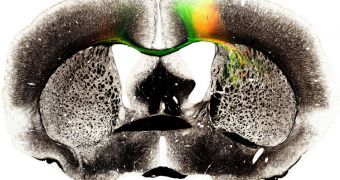A group of researchers in the United States have recently taken an important step forward in figuring out how the vertebrate brain is wired. They are currently compiling a map of how neurons in the brains of mice interact. This is critical step before moving on to the human brain.
Thus far, neuroscientists from the Cold Spring Harbor Laboratory (CSHL) have compiled more than 500 terabytes of data on how neurons in the mouse brain interact and connect with each other. However, these information only cover a small portion of how how the rodents' brains function.
On Thursday, May 31, the CSHL team released a batch of data related to the project, which represents the first global effort to construct a wiring diagram for the mammal brain that covers the entire cortex.
The team says that most of the data come in the form of gigapixel images (each of which contains around 1 billion pixels), showing whole-brain sections. They act like a virtual microscope, since researchers can zoom all the way to the level of single neurons, and assess their interactions.
The general public and other researchers interested in the research initiative can access the data freely at this link. The research team made these information available at no charge in the spirit of open science initiatives, which has yet to penetrate deeply into neurobiology.
“We’re executing a grid-based 'shotgun' strategy for neuronal tract tracing that we first proposed a few years ago, and which I am pleased to note has gained acceptance elsewhere within the neuroscience community,” researcher Partha P. Mitra, PhD, explains.
She holds an appointment as the Crick-Clay professor of biomathematics at CSHL, and is also the director of the Mouse Brain Architecture (MBA) Project. The first batch of data, she says, was made available starting June 1, and the other batches will follow at monthly intervals.
“Our project seeks to address a remarkable gap in our knowledge of the brain. Our knowledge of how the brain is wired remains piecemeal and partial after a century of intense activity. Francis Crick and Ted Jones emphasized this in an article published in Nature nearly 20 years ago,” Mitra adds.
“Yet to understand how the brain works (or fails to work in neurological or neuropsychiatric disease), it is critical that we understand this wiring diagram more fully. Further, there remain fundamental questions about brain evolution that cannot be addressed without obtaining such wiring diagrams for the brains of different species,” she concludes.

 14 DAY TRIAL //
14 DAY TRIAL //